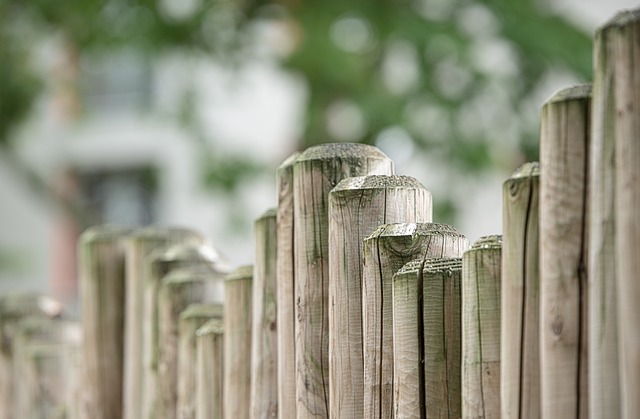In coastal regions, where harsh weather conditions and saltwater exposure pose unique challenges, durable wooden fencing is a popular and aesthetically pleasing solution. This article explores the intricacies of selecting and maintaining robust wood fence systems designed to withstand the rigors of the coastline. We delve into the benefits, from natural resistance to rot and insects to its ability to blend seamlessly with coastal landscapes. By understanding the key factors, homeowners can invest in a long-lasting and beautiful addition to their properties.
- Understanding Coastal Fencing Challenges
- Advantages of Durable Wooden Fencing
- Choosing the Right Wood Species
- Installation Considerations for Coastlines
- Maintenance Tips for Longevity
- Enhancing Coastal Beauty with Wooden Fences
Understanding Coastal Fencing Challenges
Coastal areas present unique challenges when it comes to fencing due to their harsh, often unpredictable environments. Saltwater and salty air can accelerate wood decay, while strong winds and frequent storms put immense pressure on fences. Additionally, beach ecosystems require careful consideration; any fencing should complement the natural landscape without disrupting local wildlife habitats.
The primary concern is selecting materials that can withstand these conditions without compromising aesthetics or functionality. Traditional wooden fences often struggle to last more than a few years in coastal settings. Therefore, choosing durable, rot-resistant wood species like cedar or treated timber becomes essential. These options not only endure the harsh marine climate but also offer visual appeal, ensuring that the fence enhances rather than clashes with the coastal landscape.
Advantages of Durable Wooden Fencing
Durable wooden fencing offers numerous advantages for coastal areas, where traditional materials often face harsh challenges from salt air, moisture, and extreme weather conditions. One of its key benefits is aesthetic appeal; natural wood enhances the beauty of any landscape, providing a warm and inviting ambiance that complements both residential and commercial settings. Unlike synthetic alternatives, wooden fences exude a rustic charm and can be customized with various stains, finishes, or designs to suit individual preferences.
Furthermore, durable wooden fencing is an environmentally friendly option. Wood is a renewable resource, making it a sustainable choice for coastal communities. Its longevity reduces the need for frequent replacements, minimizing waste and construction debris. Additionally, proper maintenance can extend the life of these fences, ensuring they withstand coastal conditions for many years, providing both functional protection and aesthetic value.
Choosing the Right Wood Species
When selecting wood for coastal fencing, choosing the right species is paramount to ensure durability and longevity. Softwoods like cedar and redwood are popular choices due to their natural resistance to decay and insects. These woods have a higher oil content, making them less susceptible to moisture absorption and subsequent rot.
Considered among the best options for coastal areas, these softwoods also offer excellent aesthetic appeal with their beautiful grain patterns. Additionally, they require minimal maintenance, making them an ideal long-term investment for fencing. Their density provides strength and stiffness, crucial factors in withstanding harsh weather conditions and preventing warping or splitting.
Installation Considerations for Coastlines
When installing wooden fencing in coastal areas, several unique considerations come into play to ensure longevity and resilience against the elements. One primary concern is the choice of materials; opt for durable, weather-resistant hardwoods like cedar or redwood known for their natural resistance to rot and insect damage. These woods not only endure salty sea air but also require less maintenance over time compared to softer woods.
The specific coastline environment demands careful planning. Installation should account for potential high winds, which might require reinforced posts and brackets. Additionally, ensuring proper drainage is crucial; fencing should be elevated slightly above ground level to prevent waterlogging, as stagnant water can weaken wooden structures. Regular inspections and maintenance, including re-staining and sealing, will further contribute to the fence’s durability in this challenging environment.
Maintenance Tips for Longevity
To ensure your durable wooden fencing maintains its longevity in coastal areas, regular maintenance is key. Start by cleaning the fence at least twice a year using a mild detergent and soft brush to remove salt spray buildup and other debris. This prevents premature aging and discolouration. After cleaning, apply a fresh coat of high-quality water-repellent sealer or stain every 1-2 years. This protective layer shields the wood from moisture, UV rays, and extreme temperatures, retarding rot and insect infestation.
Don’t forget to inspect your fence regularly for any signs of damage, cracks, or loose boards. Promptly repair these issues to prevent them from escalating. Keep the area around the fencing clear of debris and overhanging branches that can trap moisture against the wood. Additionally, ensure proper drainage away from the fence to minimize water pooling, which can weaken structural integrity over time.
Enhancing Coastal Beauty with Wooden Fences
Wooden fences have long been a beloved feature along coastal areas, not just for their functional purpose but also for their aesthetic appeal. The natural beauty of wood complements the breathtaking landscapes of beaches and cliffs, creating a harmonious blend that enhances the overall allure of these regions. With the right maintenance, durable wooden fencing can stand the test of time and extreme weather conditions, preserving the scenic charm for years to come.
These fences offer a sense of warmth and welcoming, providing privacy while still allowing the coastal landscape to be admired. Whether it’s a traditional style or a modern twist, wooden fencing adds character and character to coastal homes and public spaces. It creates defined boundaries without sacrificing the open, airy feel that is synonymous with coastal living.
